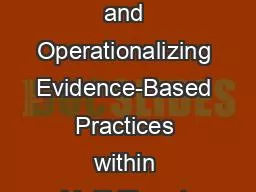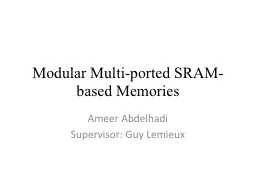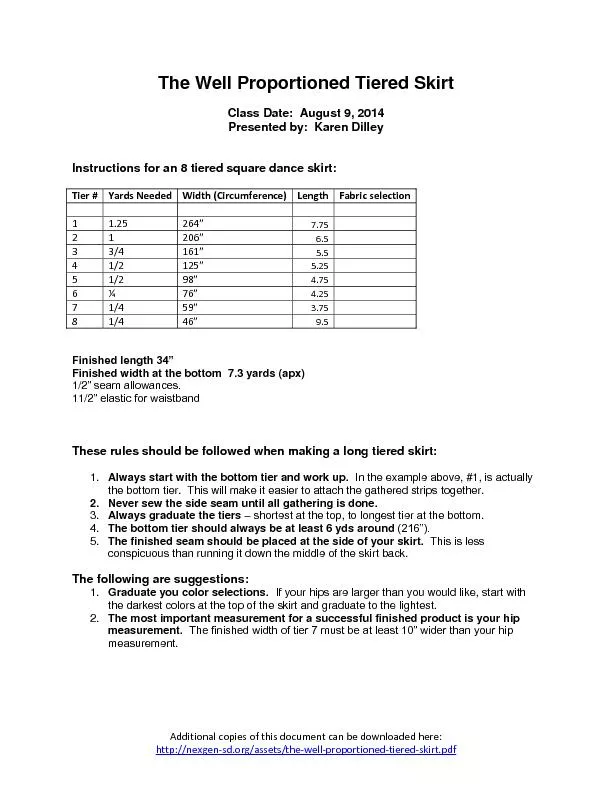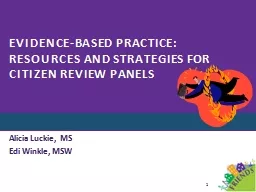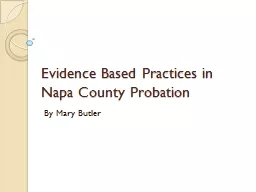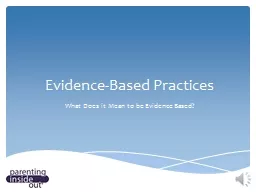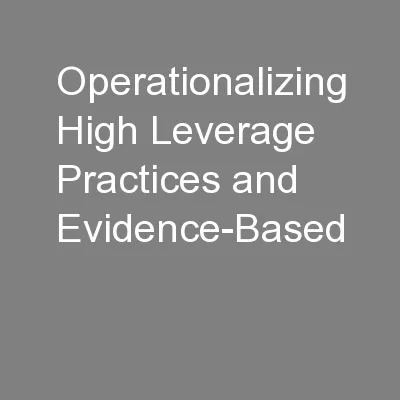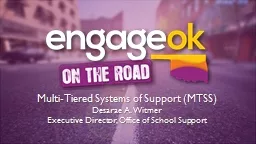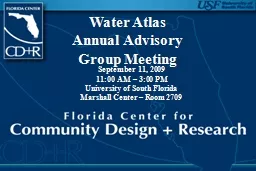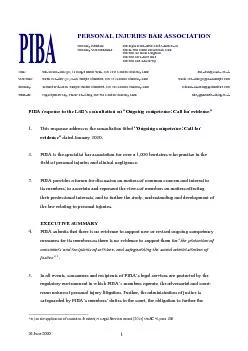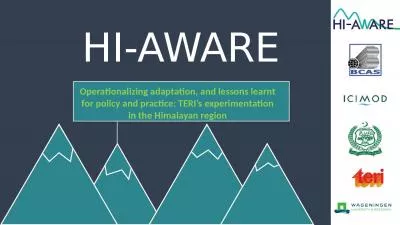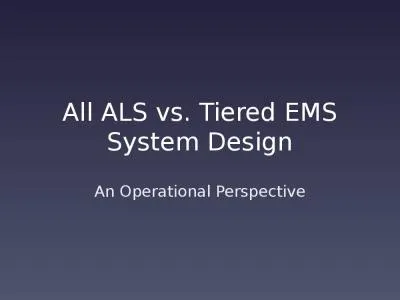PPT-Understanding and Operationalizing Evidence-Based Practices within Multi-Tiered Systems
Author : magdactio | Published Date : 2020-08-06
Allison Gruner Gandhi Lynn Holdheide Rebecca Zumeta Edmonds Chris Lemons Copyright 2016 American Institutes for Research All rights reserved April 15 2016 Lessen
Presentation Embed Code
Download Presentation
Download Presentation The PPT/PDF document "Understanding and Operationalizing Evide..." is the property of its rightful owner. Permission is granted to download and print the materials on this website for personal, non-commercial use only, and to display it on your personal computer provided you do not modify the materials and that you retain all copyright notices contained in the materials. By downloading content from our website, you accept the terms of this agreement.
Understanding and Operationalizing Evidence-Based Practices within Multi-Tiered Systems: Transcript
Download Rules Of Document
"Understanding and Operationalizing Evidence-Based Practices within Multi-Tiered Systems"The content belongs to its owner. You may download and print it for personal use, without modification, and keep all copyright notices. By downloading, you agree to these terms.
Related Documents

